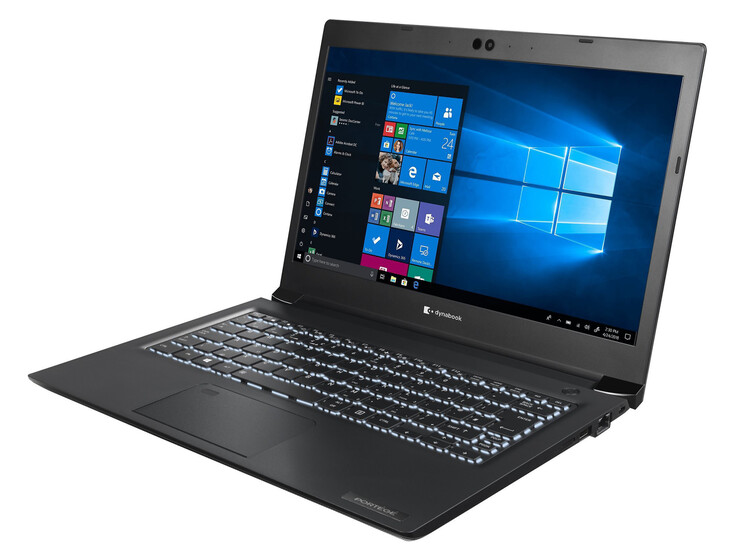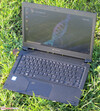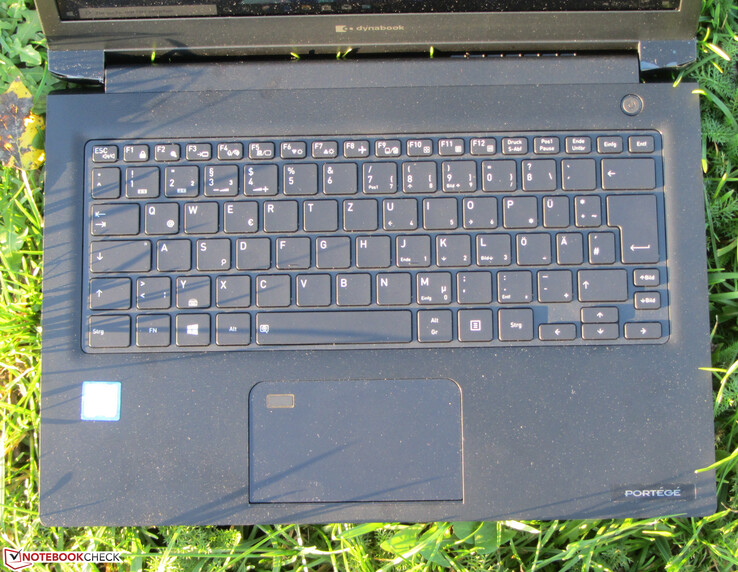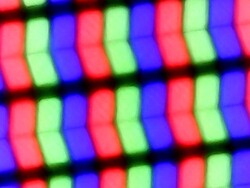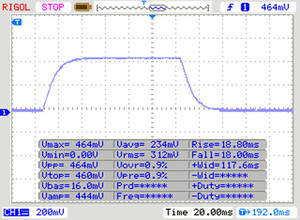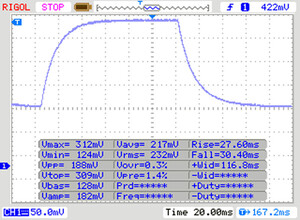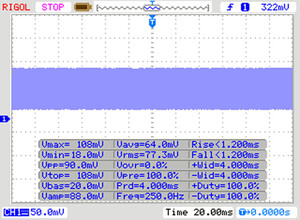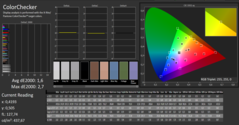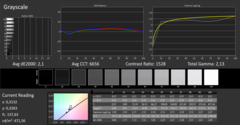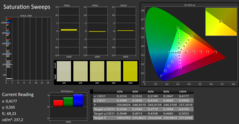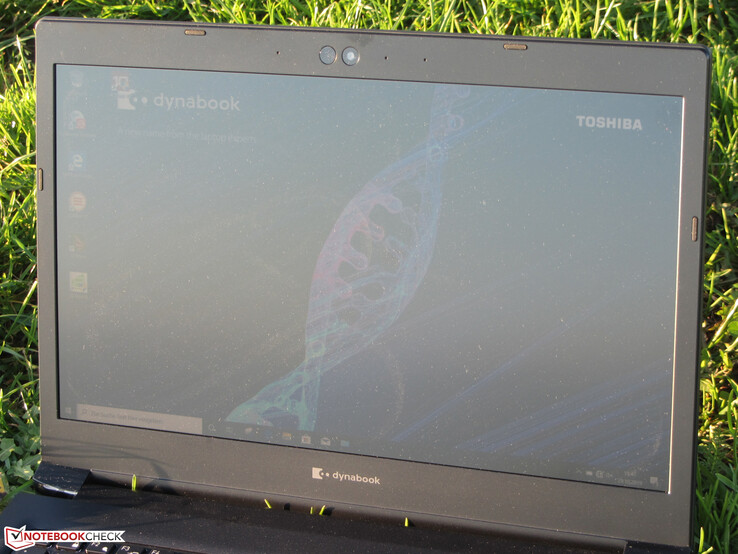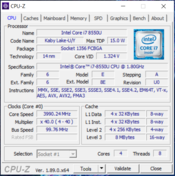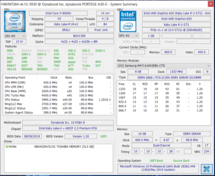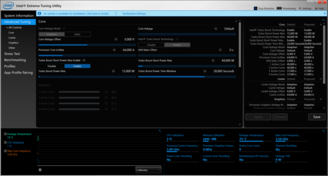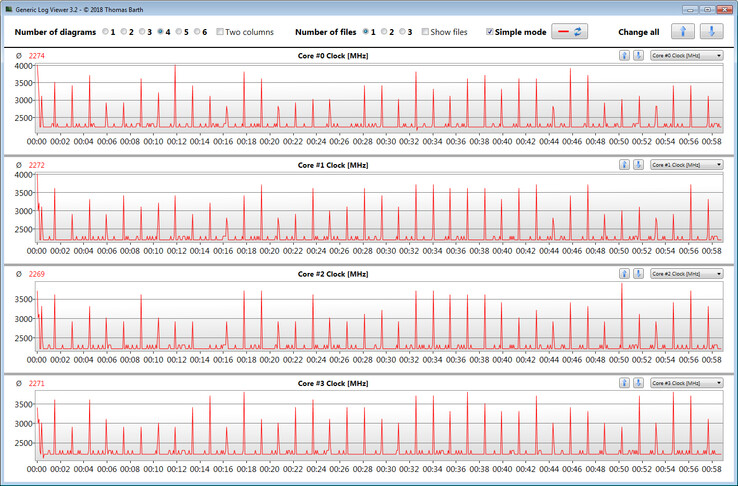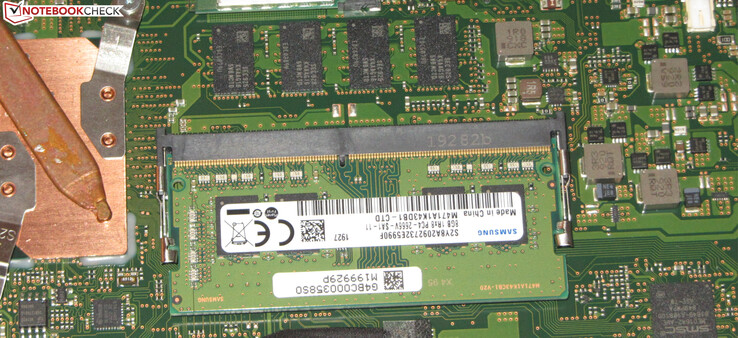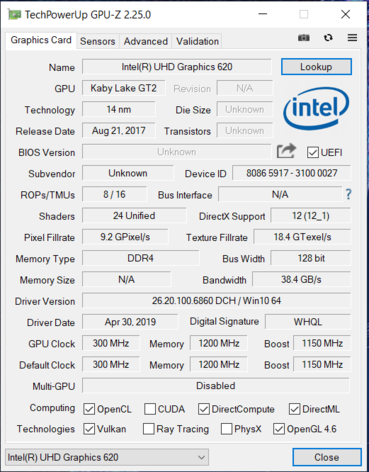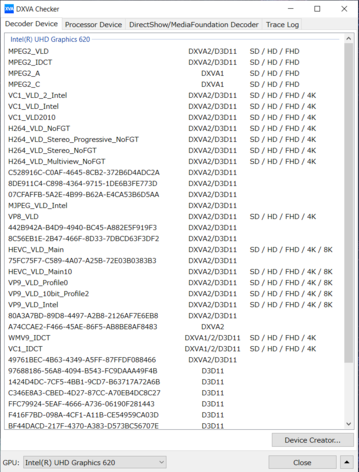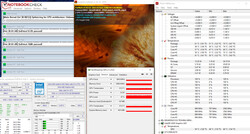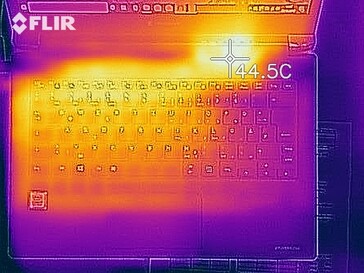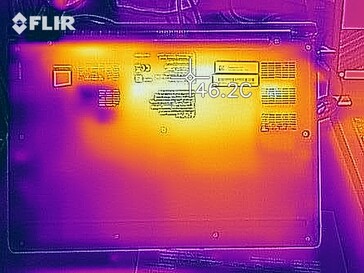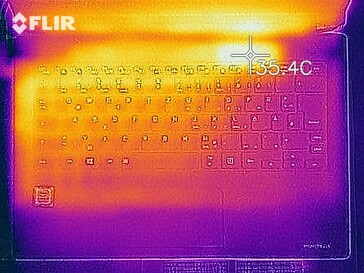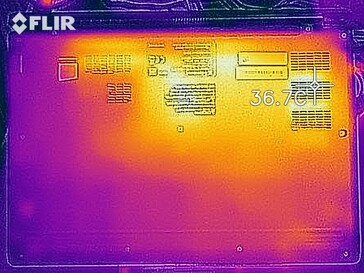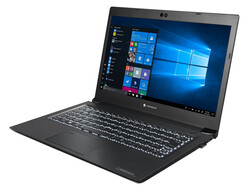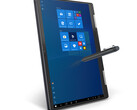Dynabook Portégé A30-E laptop review: Great display, unstable case

Toshiba laptops are a thing of the past. Since April 1, 2019, new models of the well-known series Tecra, Satellite, Portégé, etc. have been operating under the brand name Dynabook. With the Dynabook Portégé A30-E, we now have a 13.3-inch business laptop that is the successor to the Toshiba Portégé A30-D. The two devices have little in common. The A30-E's competitors include well-known business laptops such as the Dell Latitude 5300, the HP ProBook 430 G6 and the Lenovo ThinkPad L390.
Rating | Date | Model | Weight | Height | Size | Resolution | Best Price |
|---|---|---|---|---|---|---|---|
| 84.9 % | 11/2019 | Dynabook Portege A30-E-174 i5-8550U, UHD Graphics 620 | 1.2 kg | 19.9 mm | 13.30" | 1920x1080 | |
| 86.7 % | 09/2017 | Toshiba Portege A30-D-139 i3-7100U, HD Graphics 620 | 1.5 kg | 18 mm | 13.30" | 1920x1080 | |
| 84.9 % | 08/2019 | Dell Latitude 5300 i5-8365U, UHD Graphics 620 | 1.4 kg | 19 mm | 13.30" | 1920x1080 | |
| 88.4 % | 02/2019 | Lenovo ThinkPad L390-20NR0013GE i5-8265U, UHD Graphics 620 | 1.5 kg | 18.8 mm | 13.30" | 1920x1080 | |
| 83.8 % | 03/2019 | HP ProBook 430 G6-5TJ89EA i5-8265U, UHD Graphics 620 | 1.4 kg | 18 mm | 13.30" | 1920x1080 |
Case and connectivity - The A30 has a case made of plastic
Dynabook has opted for a matte black plastic housing for the Portégé A30-E. The top of the base unit and the back of the lid are provided with a grooved texture. The laptop is well processed. In terms of stability, we expect more. In this way, the base unit and the lid can be twisted too easily and too evidently. In addition, the base unit can be bent without any effort on both sides next to the keyboard. At the same time, the opposite front corner of the base unit is always raised above the surface. A laptop of this price range must offer more here. The battery is firmly installed - a difference from the predecessor.
In order to access the innards, the bottom cover must be removed. Only the SSD lacks direct access. It's mounted on the inaccessible side of the motherboard. To replace it, the motherboard would need to be dismounted.
The Type-C USB port (USB 3.2 Gen 2) supports both the DisplayPort via USB-C function and Power Delivery 3.0. A Type-A USB port (USB 3.2 Gen 1) is also available. This is complemented by an HDMI port and a Gigabit Ethernet port. A smart card reader is optionally available. While the previous model still had an optical drive, our current test device has none on board. It can't be retrofitted either. The new model also lacks the docking port of the A30-D.
The microSD memory card reader is one of the faster representatives of its kind. Copying large blocks of data achieves a maximum transfer rate of 82 MB/s. The transfer of 250 JPG image files (each of around 5 MB) is completed at a speed of 70 MB/s. We test the memory card reader using a reference card (Toshiba Exceria Pro M501 microSDXC 64GB).
The Wi-Fi module supports the fast ac standard. The transfer speeds measured under optimal conditions (no other Wi-Fi devices close by, short distance between laptop and server PC) are good. There's also an LTE modem on board.
Port configuration
| SD Card Reader | |
| average JPG Copy Test (av. of 3 runs) | |
| Dell Latitude 5300 (Toshiba Exceria Pro M501 64 GB UHS-II) | |
| Lenovo ThinkPad L390-20NR0013GE (Toshiba Exceria Pro M501 UHS-II) | |
| HP ProBook 430 G6-5TJ89EA (Toshiba Exceria Pro SDXC 64 GB UHS-II) | |
| Toshiba Portege A30-D-139 (Toshiba Exceria Pro SDXC 64 GB UHS-II) | |
| Dynabook Portege A30-E-174 (Toshiba Exceria Pro M501 microSDXC 64GB) | |
| Average of class Subnotebook (18.9 - 193.9, n=18, last 2 years) | |
| maximum AS SSD Seq Read Test (1GB) | |
| Dell Latitude 5300 (Toshiba Exceria Pro M501 64 GB UHS-II) | |
| Toshiba Portege A30-D-139 (Toshiba Exceria Pro SDXC 64 GB UHS-II) | |
| Lenovo ThinkPad L390-20NR0013GE (Toshiba Exceria Pro M501 UHS-II) | |
| Dynabook Portege A30-E-174 (Toshiba Exceria Pro M501 microSDXC 64GB) | |
| HP ProBook 430 G6-5TJ89EA (Toshiba Exceria Pro SDXC 64 GB UHS-II) | |
| Average of class Subnotebook (23.6 - 239, n=18, last 2 years) | |
Input devices - Key backlighting for the Portégé
Dynabook has equipped the A30 with a backlit chiclet keyboard. The flat, smooth keys provide a short travel and a clear pressure point. While typing, the keyboard gives in. The whole thing has a negative effect on the typing experience. The backlighting can be switched on and off through a function key. It's not possible to switch between the three available brightness levels by using the key. This is only possible within the "Dynabook Settings" software. All in all, Dynabook delivers a keyboard suitable for everyday use here; in terms of the laptop's price point, we would have expected something better. Users who do a lot of typing won't be happy with the keyboard.
The multitouch-capable ClickPad takes up an area of about 9.9 x 5.6 cm (~3.9 x 2.2 in). The smooth pad surface makes gliding easy for the fingers. It has a short travel and a clear pressure point. The laptop's fingerprint reader sits in the upper left corner of the pad.
Display - Dynabook computer with a bright IPS screen
The matte 13.3-inch screen of the A30-E works at a native resolution of 1920x1080 pixels. Contrast (1,538:1) and brightness (422.2 cd/m²) are good. Dynabook offers significantly more than the competition here.
The display flickers with a frequency of 250 Hz at brightness levels of 20% and below. Due to the low frequency, headaches and/or eye problems may occur in sensitive users.
| |||||||||||||||||||||||||
Brightness Distribution: 82 %
Center on Battery: 469 cd/m²
Contrast: 1538:1 (Black: 0.305 cd/m²)
ΔE Color 1.6 | 0.5-29.43 Ø5
ΔE Greyscale 2.1 | 0.57-98 Ø5.3
96% sRGB (Argyll 1.6.3 3D)
60% AdobeRGB 1998 (Argyll 1.6.3 3D)
66.2% AdobeRGB 1998 (Argyll 2.2.0 3D)
96.5% sRGB (Argyll 2.2.0 3D)
65.2% Display P3 (Argyll 2.2.0 3D)
Gamma: 2.13
| Dynabook Portege A30-E-174 IPS, 1920x1080, 13.30 | Toshiba Portege A30-D-139 IPS, 1920x1080, 13.30 | Dell Latitude 5300 IPS, 1920x1080, 13.30 | Lenovo ThinkPad L390-20NR0013GE IPS LED, 1920x1080, 13.30 | HP ProBook 430 G6-5TJ89EA IPS LED, 1920x1080, 13.30 | |
|---|---|---|---|---|---|
| Display | 4% | 2% | -37% | -35% | |
| Display P3 Coverage | 65.2 | 68 4% | 68.2 5% | 40.42 -38% | 41.87 -36% |
| sRGB Coverage | 96.5 | 98.1 2% | 94.4 -2% | 60.4 -37% | 62.6 -35% |
| AdobeRGB 1998 Coverage | 66.2 | 70 6% | 68.7 4% | 41.8 -37% | 43.3 -35% |
| Response Times | 10% | 29% | 4046% | 3453% | |
| Response Time Grey 50% / Grey 80% * | 57 ? | 40 ? 30% | 38 ? 33% | 42.8 ? 25% | 40.8 ? 28% |
| Response Time Black / White * | 36 ? | 30 ? 17% | 27.2 ? 24% | 30 ? 17% | 30.4 ? 16% |
| PWM Frequency | 250 ? | 208 ? -17% | 30490 ? 12096% | 26040 ? 10316% | |
| Screen | -58% | -37% | -145% | -106% | |
| Brightness middle | 469 | 319 -32% | 326 -30% | 298 -36% | 255 -46% |
| Brightness | 422 | 296 -30% | 313 -26% | 278 -34% | 238 -44% |
| Brightness Distribution | 82 | 88 7% | 87 6% | 81 -1% | 88 7% |
| Black Level * | 0.305 | 0.28 8% | 0.27 11% | 0.33 -8% | 0.18 41% |
| Contrast | 1538 | 1139 -26% | 1207 -22% | 903 -41% | 1417 -8% |
| Colorchecker dE 2000 * | 1.6 | 4.04 -153% | 3.2 -100% | 6.5 -306% | 5.4 -238% |
| Colorchecker dE 2000 max. * | 2.7 | 8.09 -200% | 6.3 -133% | 23.9 -785% | 19.5 -622% |
| Greyscale dE 2000 * | 2.1 | 5.5 -162% | 3.8 -81% | 5.6 -167% | 3.8 -81% |
| Gamma | 2.13 103% | 2.4 92% | 2.14 103% | 2.08 106% | 2.41 91% |
| CCT | 6656 98% | 7198 90% | 6900 94% | 6669 97% | 7100 92% |
| Color Space (Percent of AdobeRGB 1998) | 60 | 64 7% | 63.8 6% | 38.4 -36% | 39.4 -34% |
| Color Space (Percent of sRGB) | 96 | 98 2% | 94.8 -1% | 60.1 -37% | 62.5 -35% |
| Colorchecker dE 2000 calibrated * | 1.6 | 4.9 | 4.1 | ||
| Total Average (Program / Settings) | -15% /
-34% | -2% /
-20% | 1288% /
661% | 1104% /
575% |
* ... smaller is better
Display Response Times
| ↔ Response Time Black to White | ||
|---|---|---|
| 36 ms ... rise ↗ and fall ↘ combined | ↗ 18 ms rise | |
| ↘ 18 ms fall | ||
| The screen shows slow response rates in our tests and will be unsatisfactory for gamers. In comparison, all tested devices range from 0.1 (minimum) to 240 (maximum) ms. » 93 % of all devices are better. This means that the measured response time is worse than the average of all tested devices (21.5 ms). | ||
| ↔ Response Time 50% Grey to 80% Grey | ||
| 57 ms ... rise ↗ and fall ↘ combined | ↗ 27 ms rise | |
| ↘ 30 ms fall | ||
| The screen shows slow response rates in our tests and will be unsatisfactory for gamers. In comparison, all tested devices range from 0.2 (minimum) to 636 (maximum) ms. » 93 % of all devices are better. This means that the measured response time is worse than the average of all tested devices (33.8 ms). | ||
Screen Flickering / PWM (Pulse-Width Modulation)
| Screen flickering / PWM detected | 250 Hz | ≤ 20 % brightness setting | |
The display backlight flickers at 250 Hz (worst case, e.g., utilizing PWM) Flickering detected at a brightness setting of 20 % and below. There should be no flickering or PWM above this brightness setting. The frequency of 250 Hz is relatively low, so sensitive users will likely notice flickering and experience eyestrain at the stated brightness setting and below. In comparison: 53 % of all tested devices do not use PWM to dim the display. If PWM was detected, an average of 17933 (minimum: 5 - maximum: 3846000) Hz was measured. | |||
The display boasts a great color reproduction out of the box. With a DeltaE 2000 color deviation of 1.6, the target (DeltaE less than 3) is met. The grayscales are displayed in a quite balanced way. The display doesn't suffer from a blue tint. However, it isn't able to fully map the AdobeRGB (60%) and sRGB (96%) color spaces.
Performance - Core i7 with restrained Turbo
With the Portégé A30-E, Dynabook delivers a business laptop in the 13.3-inch format. The device provides enough computing power for office and Internet applications. Our test device is available from around 1,300 Euros (~$ 1,445) and is therefore the most expensive model in the series at the moment. Other configuration variants are available.
Processor
The Portégé is powered by an Intel Core i7-8550U (Kaby Lake refresh) quad-core processor. The CPU operates at a base speed of 1.8 GHz. An increase to up to 4 GHz is possible through Turbo.
The processor works through the multithread tests of the Cinebench benchmarks at 3.1 to 3.2 GHz for a few seconds. The clock speed then drops to 2.1 to 2.3 GHz. The single-thread tests are run at 3.2 to 4 GHz for a short time. The clock speed then drops to 2.9 to 3.8 GHz. On battery power, the speeds range from 1.7 to 1.9 GHz (multithread) and 1.6 to 2.5 GHz (single-thread), respectively.
We test whether Turbo is also used consistently by running Cinebench's R15 multithread test continuously in a loop for a about 30 minutes. The results fall slightly from the first to the second run and then remain at a constant level. Turbo is used to a very small extent.
| Cinebench R10 | |
| Rendering Single 32Bit | |
| Average of class Subnotebook (2481 - 10300, n=14, last 2 years) | |
| Average Intel Core i7-8550U (4202 - 8211, n=31) | |
| Dynabook Portege A30-E-174 | |
| Rendering Multiple CPUs 32Bit | |
| Average of class Subnotebook (13940 - 56242, n=14, last 2 years) | |
| Average Intel Core i7-8550U (11694 - 24180, n=31) | |
| Dynabook Portege A30-E-174 | |
| Geekbench 3 | |
| 32 Bit Multi-Core Score | |
| Average of class Subnotebook (last 2 years) | |
| Average Intel Core i7-8550U (8918 - 14144, n=12) | |
| Dynabook Portege A30-E-174 | |
| 32 Bit Single-Core Score | |
| Average of class Subnotebook (last 2 years) | |
| Dynabook Portege A30-E-174 | |
| Average Intel Core i7-8550U (2471 - 4020, n=12) | |
| Geekbench 5.0 | |
| 5.0 Multi-Core | |
| Average of class Subnotebook (3749 - 11684, n=15, last 2 years) | |
| Dynabook Portege A30-E-174 | |
| Average Intel Core i7-8550U () | |
| 5.0 Single-Core | |
| Average of class Subnotebook (663 - 1828, n=15, last 2 years) | |
| Dynabook Portege A30-E-174 | |
| Average Intel Core i7-8550U () | |
| Mozilla Kraken 1.1 - Total | |
| Lenovo ThinkPad L390-20NR0013GE (Edge) | |
| HP ProBook 430 G6-5TJ89EA (Edge) | |
| Dynabook Portege A30-E-174 (Edge 44) | |
| Average Intel Core i7-8550U (877 - 2114, n=45) | |
| Average of class Subnotebook (363 - 1913, n=68, last 2 years) | |
| Octane V2 - Total Score | |
| Average of class Subnotebook (49893 - 98093, n=34, last 2 years) | |
| Average Intel Core i7-8550U (17296 - 42043, n=39) | |
| HP ProBook 430 G6-5TJ89EA (Edge) | |
| Lenovo ThinkPad L390-20NR0013GE (Edge) | |
| Dynabook Portege A30-E-174 (Edge 44) | |
| JetStream 1.1 - Total Score | |
| Average of class Subnotebook (last 2 years) | |
| HP ProBook 430 G6-5TJ89EA (Edge) | |
| Average Intel Core i7-8550U (141.9 - 288, n=61) | |
| Lenovo ThinkPad L390-20NR0013GE (Edge) | |
| Dynabook Portege A30-E-174 (Edge 44) | |
* ... smaller is better
System performance
| PCMark 8 Home Score Accelerated v2 | 3495 points | |
| PCMark 8 Creative Score Accelerated v2 | 3481 points | |
| PCMark 8 Work Score Accelerated v2 | 4848 points | |
| PCMark 10 Score | 3407 points | |
Help | ||
Storage
The system drive is an NVMe SSD (M.2 2280 format) from Toshiba/Kioxia, which has a capacity of 512 GB (421 GB usable). The transfer speeds of the SSD are good. However, it's not a top-of-the-line model.
| Dynabook Portege A30-E-174 Toshiba KBG40ZNV512G | Toshiba Portege A30-D-139 Toshiba SG5 THNSNK128GVN8 | Dell Latitude 5300 SK Hynix PC401 512GB M.2 (HFS512GD9TNG) | Lenovo ThinkPad L390-20NR0013GE Samsung SSD PM981 MZVLB256HAHQ | HP ProBook 430 G6-5TJ89EA WDC PC SN520 SDAPNUW-256G | Average Toshiba KBG40ZNV512G | Average of class Subnotebook | |
|---|---|---|---|---|---|---|---|
| CrystalDiskMark 5.2 / 6 | -64% | 5% | 11% | -8% | 14% | 74% | |
| Write 4K | 120.8 | 79.9 -34% | 119.2 -1% | 99.6 -18% | 101.8 -16% | 142.5 ? 18% | 154.5 ? 28% |
| Read 4K | 51.3 | 22.68 -56% | 41.43 -19% | 37.22 -27% | 41.35 -19% | 51.5 ? 0% | 65.8 ? 28% |
| Write Seq | 1254 | 139.4 -89% | 1240 -1% | 1432 14% | 929 -26% | 1425 ? 14% | 2466 ? 97% |
| Read Seq | 1337 | 472.7 -65% | 1668 25% | 2072 55% | 1388 4% | 1511 ? 13% | 2627 ? 96% |
| Write 4K Q32T1 | 289.5 | 122.6 -58% | 381.7 32% | 439.7 52% | 453.5 57% | 349 ? 21% | 399 ? 38% |
| Read 4K Q32T1 | 392.9 | 234.6 -40% | 371.5 -5% | 264.8 -33% | 286.2 -27% | 563 ? 43% | 486 ? 24% |
| Write Seq Q32T1 | 1490 | 139.3 -91% | 1369 -8% | 1549 4% | 1302 -13% | 1508 ? 1% | 3872 ? 160% |
| Read Seq Q32T1 | 2301 | 549 -76% | 2652 15% | 3318 44% | 1751 -24% | 2311 ? 0% | 5134 ? 123% |
Graphics card
Intel's UHD Graphics 620 graphics core is responsible for graphics output. The GPU supports DirectX 12 and achieves working speeds of up to 1,150 MHz. The results in the 3DMark benchmarks are at a normal level for this GPU. The decoder integrated into the GPU can unload the processor when playing videos. Therefore, using streaming services isn't a problem.
| 3DMark 11 Performance | 1971 points | |
| 3DMark Cloud Gate Standard Score | 8060 points | |
| 3DMark Fire Strike Score | 1128 points | |
| 3DMark Time Spy Score | 436 points | |
Help | ||
Gaming performance
The hardware of the A30-E allows playing some of the games that are in our database smoothly - at low resolutions and low quality settings. This includes games that only have moderate hardware requirements - such as "Bioshock Infinite" or "League of Legends". The titles of the last three or four years are unplayable for the most part.
| low | med. | high | ultra | |
| BioShock Infinite (2013) | 68.7 | 37 | 31.4 | 10.4 |
Emissions and energy - 13.3-inch only heats up moderately
Noise emissions
When idle, the fan is often turned off and silence prevails. It turns up under full load. During the stress test, we measure a sound pressure level of 38.8 dB(A). The fan produces a subtle whistle, which can be tolerated for a short time. Over a prolonged period of time, it quickly becomes annoying.
Noise Level
| Idle |
| 30.4 / 30.4 / 30.4 dB(A) |
| Load |
| 34.7 / 38.8 dB(A) |
 | ||
30 dB silent 40 dB(A) audible 50 dB(A) loud |
||
min: | ||
Temperature
Our stress test (Prime95 and FurMark run for at least an hour) is run by the processor and graphics core at 1.4 GHz and 200 MHz, respectively. On battery power, the clock speeds range from 800 to 900 MHz (CPU) and 650 MHz (GPU), respectively. The stress test represents an extreme scenario that doesn't occur in everyday life. With this test, we verify that the system remains stable even under full load.
The Toshiba Portégé doesn't get excessively warm. During the stress test, we only register a temperature just above 40 °C (~104 °F) at one measuring point. In everyday operation, the values are significantly lower.
(+) The maximum temperature on the upper side is 36.3 °C / 97 F, compared to the average of 35.9 °C / 97 F, ranging from 21.4 to 59 °C for the class Subnotebook.
(±) The bottom heats up to a maximum of 40.8 °C / 105 F, compared to the average of 39.4 °C / 103 F
(+) In idle usage, the average temperature for the upper side is 25.3 °C / 78 F, compared to the device average of 30.7 °C / 87 F.
(+) The palmrests and touchpad are cooler than skin temperature with a maximum of 24.3 °C / 75.7 F and are therefore cool to the touch.
(+) The average temperature of the palmrest area of similar devices was 28.3 °C / 82.9 F (+4 °C / 7.2 F).
Speakers
The stereo speakers of the Dynabook laptop are placed at the front edge of the device's bottom. They produce a decent sound that is largely lacking bass.
Dynabook Portege A30-E-174 audio analysis
(±) | speaker loudness is average but good (75.2 dB)
Bass 100 - 315 Hz
(-) | nearly no bass - on average 27.8% lower than median
(±) | linearity of bass is average (7.6% delta to prev. frequency)
Mids 400 - 2000 Hz
(±) | higher mids - on average 10.3% higher than median
(±) | linearity of mids is average (10.8% delta to prev. frequency)
Highs 2 - 16 kHz
(±) | higher highs - on average 11.5% higher than median
(±) | linearity of highs is average (7.5% delta to prev. frequency)
Overall 100 - 16.000 Hz
(-) | overall sound is not linear (36.1% difference to median)
Compared to same class
» 96% of all tested devices in this class were better, 1% similar, 3% worse
» The best had a delta of 5%, average was 19%, worst was 53%
Compared to all devices tested
» 93% of all tested devices were better, 1% similar, 6% worse
» The best had a delta of 4%, average was 25%, worst was 134%
Energy consumption
The Portégé A30 doesn't show any anomalies in terms of energy demand. When idle, we register a maximum energy requirement of 6.2 watts. During the stress test (Prime95 and FurMark run for at least an hour), the value increases to up to 32 watts. The output of the power adapter is 45 watts.
| Off / Standby | |
| Idle | |
| Load |
|
Battery life
Our practical Wi-Fi test uses a script to simulate the load caused by accessing websites. The "Balanced" profile is active, the power saving functions are deactivated, and the display brightness is adjusted to about 150 cd/m². The Portégé reaches a runtime of 10:35 h.
Pros
Cons
Verdict
The big highlight of the Portégé A30-E is the display. This is a bright, contrast-rich, viewing-angle-stable IPS model that offers great color reproduction. The sRGB color space can be mapped to 96%.
The Portégé A30-E leaves a conflicting impression.
The matte black plastic housing, on the other hand, is unable to convince. It lacks stability. The backlit keyboard is proving to be suitable for everyday use; however, it's not made for users who type a lot. On the other hand, the good battery life is cause for enthusiasm.
An NVMe SSD makes for a fast system. A replacement of the SSD is possible, but it involves effort: The motherboard would have to be removed.
The built-in Kaby Lake quad-core processor provides enough computing power for office and Internet applications. However, it can't make a specially strong use of its Turbo under prolonged multithread load. On battery power, the CPU's Turbo is hardly used or not used at all.
An LTE modem enables Internet connections via cellular radio. The built-in Type-C USB port (USB 3.2 Gen 2) supports both the DisplayPort via USB-C function and Power Delivery 3.0. Therefore, the laptop can be powered via the Type-C port.
Dynabook Portege A30-E-174
-
11/04/2019 v7
Sascha Mölck


 Deutsch
Deutsch English
English Español
Español Français
Français Italiano
Italiano Nederlands
Nederlands Polski
Polski Português
Português Русский
Русский Türkçe
Türkçe Svenska
Svenska Chinese
Chinese Magyar
Magyar